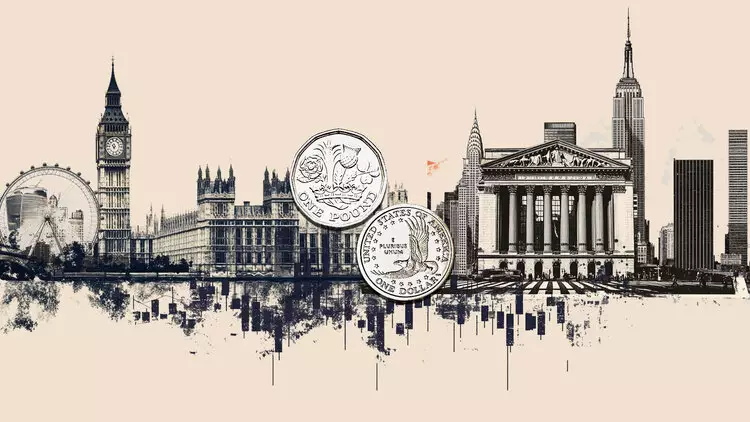The recent swings in the GBP/USD exchange rate reflect a landscape rife with uncertainty and geopolitical fragility. While analysts have noted modest gains of about 0.07% following last week’s disappointing US jobs data, such small movements mask a deeper underlying instability. The pair trades around 1.3305, but beneath this figure lies a complex web of economic signals and political events that cast doubt on the future trajectory of both currencies.
What stands out most is the divergence between economic fundamentals and market sentiment. The US’s latest economic releases paint a mixed picture: a slowdown in the services sector with the ISM Services PMI slipping to 50.1—just barely in expansion territory—raises questions about sustained growth. Meanwhile, the trade deficit reaching a nearly two-year low is a positive sign, yet its impact on the dollar remains muted amidst widespread skepticism. This disconnect signals a market in flux, one that is heavily influenced by political volatility and credibility concerns rather than clear-cut economic indicators.
What truly complicates matters is the erosion of trust in the US data landscape. The abrupt removal of the head of the Bureau of Labor Statistics (BLS) and the resignation of Fed Governor Adriana Kugler have sparked doubts about the independence and reliability of key economic reports. For investors and traders alike, these shifts are warning signs: if the data underpinning monetary policy are perceived as unreliable, markets will likely react with increased volatility and caution. When President Donald Trump dismisses potential candidates like Scott Bessent for the Fed’s top role, it adds fuel to the fire, highlighting political interference that further undermines policy credibility.
Over in the UK, the economic tone appears gloomier. The S&P Global Services PMI fell to 51.8, the lowest since November 2022, primarily because of declining new orders. Given that the UK economy relies heavily on the services sector, this decline hints at a slowing economic momentum—particularly relevant as market participants prepare for the Bank of England’s upcoming monetary policy decision scheduled for August 7. Expectations are leaning toward a rate cut, with a 90% probability that the Bank Rate will be lowered to 4%, further influencing GBP’s short-term outlook.
Technical Landscape and Trading Perspectives
From a technical perspective, the GBP/USD pair seems poised on the edge of consolidation, hovering near the 1.3300 mark. The recent high of 1.3330 on August 4 and the 100-day simple moving average (SMA) at 1.3369 act as resistance levels that traders will be watching. Despite the Relative Strength Index (RSI) hinting at a slight move higher, it remains below its neutral point, signaling that bullish momentum is fragile and that sellers could still dominate on any uptick.
Support levels are clearly defined: the immediate support at 1.3300, and if breached, the next key area lies around 1.3141, the low of August 1. These levels will be critical in determining whether the pair can break out of its consolidation phase or if it will succumb to downward pressure amid the overarching doubts about economic data stability.
The currency’s recent performance against other major currencies adds another layer to its outlook. Notably, the GBP has shown relative strength against the Swiss Franc this week, a move that suggests the UK’s position might momentarily buck broader global trends. However, currency markets are notoriously volatile, and minor shifts in these cross-rates can serve as early signals of larger underlying movements.
Market Sentiment and Future Outlook
Ultimately, the GBP/USD exchange rate is caught in a tug-of-war between fundamental uncertainties and technical support levels. Traders’ sentiment remains cautious, with the market hesitant to commit until clearer signals emerge regarding the US political climate and the UK’s upcoming rate decision. The risk of increased volatility is palpable, especially considering the geopolitical and political risks overshadowing economic data.
While some may interpret recent minor gains as a sign of resilience, it’s crucial to recognize that these are likely temporary. The broader environment, characterized by deteriorating confidence in US economic reports and policy unpredictability, will continue to exert downward pressure on the dollar. Conversely, the UK’s economic slowdown and potential rate cuts could weaken the pound further, unless the market perceives a convincing trajectory of recovery or stabilization.
In this volatile patch, investors should remain vigilant. The GBP/USD pair embodies the intricate interplay of economic data, political willingness, and technical signals—a cocktail that promises ongoing surprises. The key takeaway is that any move above resistance levels should be viewed with skepticism, and downside risks remain elevated as the market navigates uncharted waters of trust and stability.

